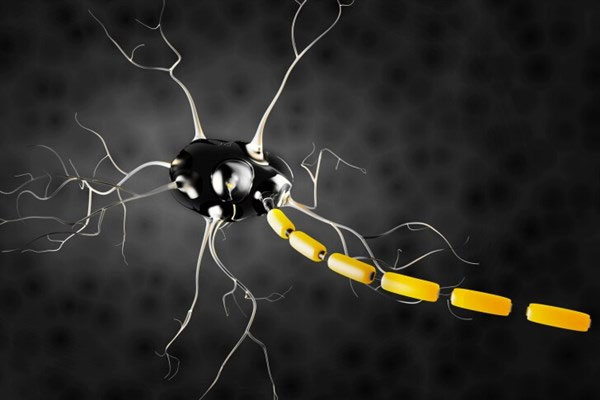A new study has demonstrated how a toxin causing edema selectively targets and disables pain-signaling neurons in the dorsal root ganglia of the spinal cord.
The preclinical research, led by scientists from Harvard Medical School (USA), found that certain factors in the toxin produced by anthrax bacteria can deactivate the activity of pain-signaling neurons in the brain. The study suggests that this could be a novel model for future pain relief therapies.

Certain proteins can affect neurons in the brain and block pain sensation.
The toxin of anthrax consists of several molecules secreted by the anthrax bacteria. Each type of protein is non-toxic on its own, but when combined, they can be lethal. The new study aims to understand how these toxins affect neurons in the brain.
There are two types of anthrax toxins: those that cause edema and those that are lethal. Both toxins share an important protein known as PA (protective antigen). PA facilitates the transport of edema factor (EF) protein or lethal factor (LF) protein into the cells.
The new research has demonstrated how the edema toxin selectively targets and disables pain-signaling neurons in the dorsal root ganglia of the spinal cord.
The researchers injected these two types of proteins into the spinal cords of mice. These proteins were found to effectively interact with specific neurons in the brain and block pain sensation.
Isaac Chiu, one of the study authors, stated: “This molecular framework uses bacterial toxins to deliver substances into neurons while also modulating their function. This is a new way to target pain-causing intermediary neurons.”
According to Nicole Yang, a co-author of the study, in the future, various types of proteins may be developed to provide targeted treatment methods.
However, the scientists noted that further research is necessary before this potential new therapy can be applied. The researchers are confident that delivering the edema toxin to the brain via the spinal cord will avoid potential toxicity issues in the rest of the body.
So far, initial signs indicate that the action of this toxin on the brain is targeted. Additionally, there are no indications from animal trials suggesting disruption to other mechanisms such as motor function.
The researchers hypothesize that this specificity in the toxin’s action in the brain may be an evolutionary adaptation, helping the anthrax bacteria evade detection in the organisms it infects.


















































